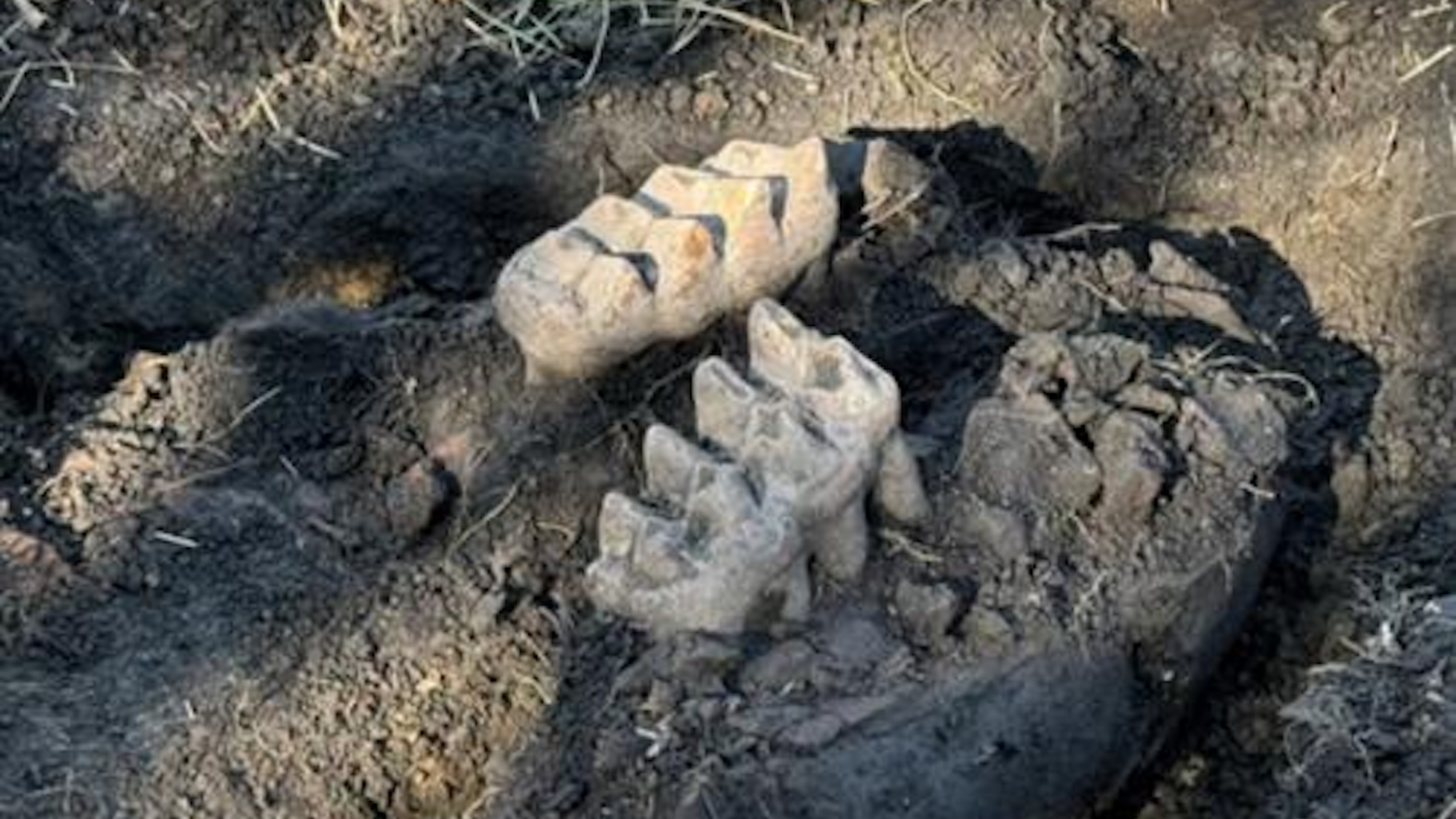A Hudson Valley homeowner recently noticed something surprising in his backyard: two large, partially buried animal teeth. A bit of amateur digging followed by professional assistance from New York State Museum and SUNY Orange soon revealed much more. Now, researchers are preparing to analyze the first complete mastodon jaw discovered in the state in over a decade.
“When I found the teeth and examined them in my hands, I knew they were something special and decided to call in the experts,” the Orange County resident said in the NYSM’s December 17th announcement, adding that he was “thrilled” by the discovery.
Experts have already confirmed the jaw, along with toe and rib fragments, belonged to an adult mastodon, one of the many that thrived across portions of North America. Fossil evidence indicates multiple mammoth species existed on the continent as early as 3.5 million years ago, sometimes migrating in herds as far south as Mississippi and Florida. An adult Mammut Americanum was smaller than the modern African elephant, but still reached an average shoulder height of 9.5 feet while weighing as much as 8 tons. Their diets primarily consisted of plants, pine cones, and other leafy vegetation, but ultimately went extinct around 10,500 years ago. The exact cause of their disappearance remains a matter of debate, with experts often attributing it to a combination of early Clovis society hunting and climatic changes.
The age of the new mastodon find isn’t certain yet. Paleontologists will spend the next few months both carbon dating and conducting a “comprehensive analysis” of the specimens to estimate their age, as well as better understand its diet. The fossils are also scheduled to publicly debut by the end of 2025.
“While the jaw is the star of the show, the additional toe and rib fragments offer valuable context and the potential for additional research,” explained Cory Harris, chair of SUNY Orange’s Behavioral Sciences Department.
The NYSM announcement notes that Orange County is home to approximately one-third of the over 150 mastodon fossils recovered in the state. But New York’s relationship to the elephant ancestors has a long history. The first mastodon fossil ever discovered in the country was identified well before the United States even declared its independence. Evidence of M. Americanum dates back to bones found in 1705 in Claverack, New York. It wouldn’t be until 1792, however, that scientists began recognizing mastodons as a distinct species.
Robert Feranec, director of Research & Collections and curator of the New York State Museum’s Ice Age Animals archive, described the latest find as a “testament to the rich paleontological history of New York,” and one that will offer a unique chance to further study the ancient animal.
Museum representatives encourage New York residents to report any similar finds, so that experts will have even more opportunities to expand their knowledge about the state’s prehistoric history. The locals won’t be alone in scouring for more mastodon fossils, however—researchers are already planning to return to the Orange County backyard to search for any additional bones.

